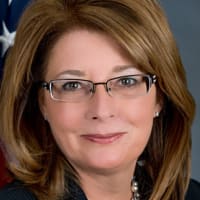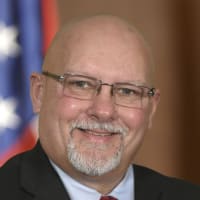 Helming
Helming
 Gallahan
Gallahan
Seneca Falls, N.Y., served as the stage for the first women’s rights convention in the United States in July 1848. Dubbed the Seneca Falls Convention, the gathering of roughly 300 people launched the women’s suffrage movement, which seven-plus decades later ensured for women the right to vote.
One of the meeting’s organizers, Elizabeth Cady Stanton, told those gathered that day, “We are assembled to protest against a form of government, existing without the consent of the governed—to declare our right to be free as man is free.”
Attendees discussed 11 resolutions on women’s rights. All passed unanimously except the resolution demanding women’s right to vote. Stanton and African American abolitionist Frederick Douglass gave impassioned speeches in its defense before it eventually and narrowly passed.
One newspaper declared that the convention was “the most shocking and unnatural event ever recorded in the history of womanity.”
Women’s History Month
This story was first published in March 2021 and has been updated for Women’s History Month, which began in 1980 as Women’s History Week. Read more
Last year, women made up about 33% of state legislators—or 2,451—the highest percentage in the nation’s history. Women make up 51.1% of the U.S. population.
With a population of about 6,000, Seneca Falls lies roughly 190 miles west of the capital, Albany. To learn more about the town and its place in voting history, NCSL caught up with the lawmakers who represent the area: Jeff Gallahan (R) of Assembly District 131 and Pamela Helming (R) of Senate District 54.
What does it mean to your constituents today that Seneca Falls was the site of the first women’s rights convention?
Gallahan: I am proud to represent Seneca Falls. As the site of the historical women’s rights convention, it is very meaningful that our local history is such a large part of our nation’s history.
Helming: It is an honor to represent Seneca Falls, the birthplace of the women’s right movement and a district that played a historic and instrumental role in securing the right to vote for women. I think this is a tremendous source of pride for the people who live here. I, and I think many women, feel not only a great sense of appreciation and respect for those who paved our way, but also a great responsibility to continue to protect and advance the rights of women. There are so many amazing women in my district who are doing great work in support of young girls and women. It’s very important to me—especially as the first woman elected to represent the 54th Senate District—to do my part to encourage more women to run for public office.
Women organizing a convention and demanding the right to vote were radical ideas in 1848. Has Seneca Falls always been ahead of its time?
Gallahan: The women’s rights convention is not the only piece of history native to Seneca Falls. It is home to the It’s a Wonderful Life Museum, as it is believed that Seneca Falls is the inspiration for the town Bedford Falls in the movie, and the Underground Railroad had routes that ran through Seneca Falls.
Helming: We have great leadership and great people in Seneca Falls who continue to be strong voices for progress. At the Hunt House in Waterloo, N.Y.—nearby Seneca Falls—Jane Hunt hosted the tea party that launched the women’s suffrage movement and the first women’s rights convention held at Wesleyan Chapel in Seneca Falls in 1848. Three years later, on a nearby street corner, Amelia Bloomer introduced Susan B. Anthony to Elizabeth Cady Stanton. In 1873 at the Ontario County Courthouse in Canandaigua, Anthony was tried and convicted of voting illegally as a woman. Last year, I joined with other local leaders in a ceremony dedicating the road outside that courthouse in Anthony’s name. It is now Susan B. Anthony Lane.
Gallahan: I was proud to serve on the Ontario County Board of Supervisors, which approved renaming the street. Every time I pass that courthouse, I am reminded of her great work and the work of all the suffragettes. They are the reason my wife and daughter can join me every year in casting our ballots.
The town also is home to the National Women’s Hall of Fame. What can visitors see there?
Gallahan: I encourage everyone to visit Seneca Falls and the Finger Lakes region. The National Women’s Hall of Fame and the Women’s Rights National Historical Park offer detailed historical exhibits.
Helming: Seneca Falls is a vibrant community that continues to honor its place in history while planning for the future. A great example of that is the National Women’s Hall of Fame, which is now located in the rehabilitated 1844 Seneca Knitting Mill building. The mill was built four years before the first women’s rights convention, and its leadership and employees had ties to the movement.
Also in my district is the Harriet Tubman National Historical Park in Auburn, N.Y. Tubman was a leader in the Underground Railroad and a strong voice in the women’s suffrage movement. Though women nationally gained the right to vote in 1920, Black women would wait 45 years more to exercise that right, when the Voting Rights Act of 1965 prohibited racial discrimination in voting.
What else would you like people to know about your district?
Gallahan: The district is in the beautiful Finger Lakes region, an area full of natural beauty, outdoor activities and rich history. While visiting Seneca Falls, take a stroll on the waterfront and visit one of the many great local restaurants.
Helming: The 54th Senate District encompasses three regions of New York State: the Finger Lakes, Central New York and the Southern Tier. We have businesses leading the way in diverse industries, such as food and agriculture, wine and craft beverages, and advanced manufacturing. We have a skilled and talented workforce. We are a world-class tourism and recreation destination. And we are home to caring and giving people who look out for one another, something we have seen time and again over the last year of the pandemic. It is my honor to represent them.
The Women’s Rights National Historical Park and the Elizabeth Cady Stanton House have more information on Women’s History Month activities in Seneca Falls.
Doug McPherson is a Denver-based freelance writer.
“My District” gives NCSL members a chance to tell us about life in the places they represent, from the high-profile events to the virtues only locals know about.